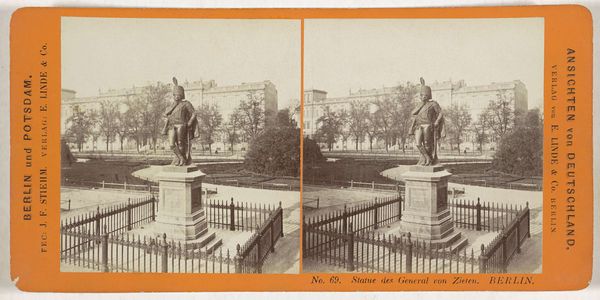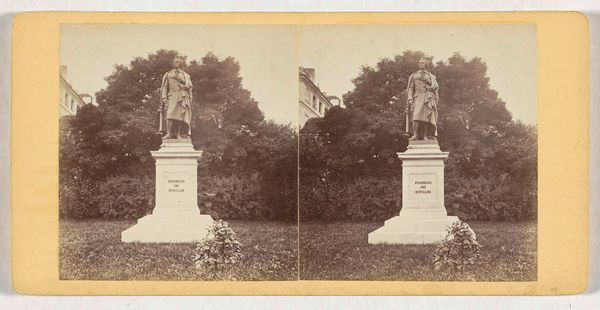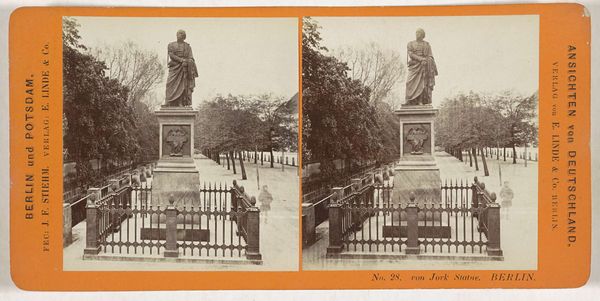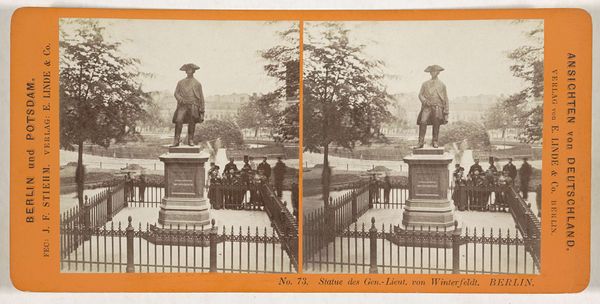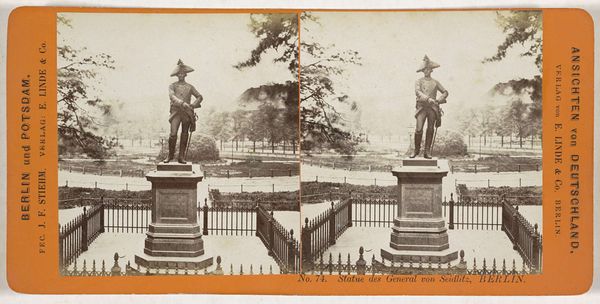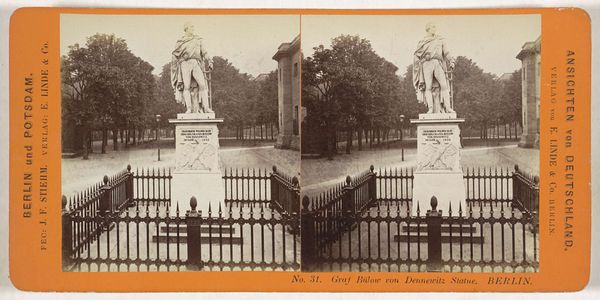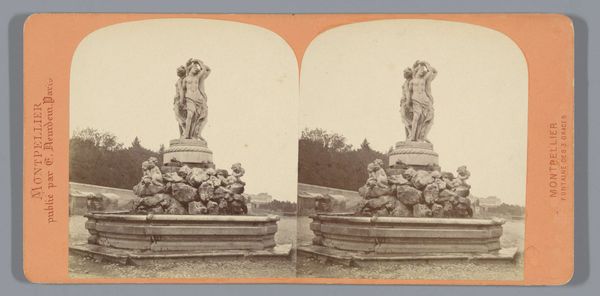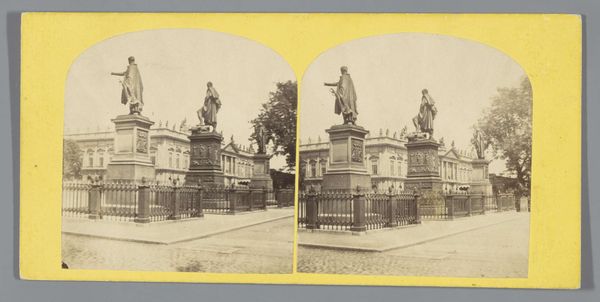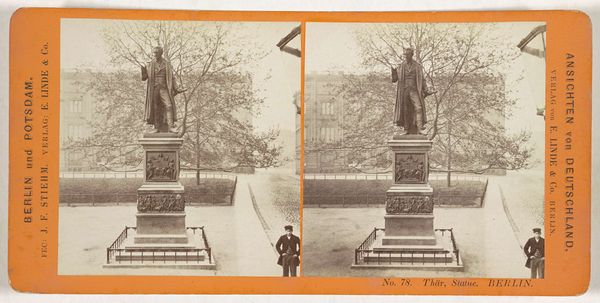
Standbeeld van veldmaarschalk James Francis Edward Keith op het Wilhelmplatz, Berlijn 1868 - 1870
0:00
0:00
Dimensions: height 86 mm, width 176 mm
Copyright: Rijks Museum: Open Domain
Curator: This is a stereoscopic, gelatin silver print taken by Johann Friedrich Stiehm, dating from around 1868 to 1870. The image shows the statue of Field Marshal James Francis Edward Keith located on the Wilhelmplatz in Berlin. Editor: My first impression is of faded grandeur. The scene is bathed in a sepia tone, evoking a feeling of distance from a powerful past—it speaks to the idea of memory and its inherent elusiveness. Curator: I'm immediately struck by how the artist chose to present this very neoclassical symbol. The sculpture, representing a prominent figure of the Prussian military, stands proud on a decorated plinth enclosed by an iron fence, surrounded by an early public garden. The composition places him, quite literally, above the everyday citizen. Editor: Absolutely, and the gesture of the Field Marshall extending his arm feels incredibly paternalistic, directing, even dictatorial, which says so much about power dynamics at the time, and, considering Keith's involvement with Frederick the Great, how that resonates through Prussian and later German identity. Curator: Precisely! He represents order and command and fits the Neoclassical obsession with conveying morality and virtue through historical or idealized figures. But, seeing this photographic rendering versus an actual stone or bronze sculpture changes our perception, doesn't it? The graininess adds an aged vulnerability to such an authoritative figure. Editor: That’s where things get really interesting! By placing a sculptural monument in a photograph, it adds layers of meaning, blurring the line between historical record and artistic interpretation, and between representation and reality, prompting viewers to question what histories are being valorized here. The framing in the shot and the deliberate positioning really impact how viewers in the present engage with history, don’t they? It can be very revealing. Curator: It allows us, hopefully, to re-evaluate the complex symbolism associated with leaders in times of peace and upheaval, beyond mere commemoration, through which their visual rhetoric endures. Editor: I agree, the seemingly simple juxtaposition captured here between authority, time and memorial becomes a mirror for ongoing conversations about our values and histories.
Comments
No comments
Be the first to comment and join the conversation on the ultimate creative platform.
